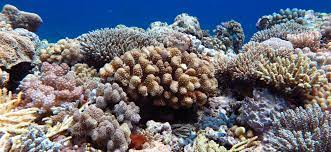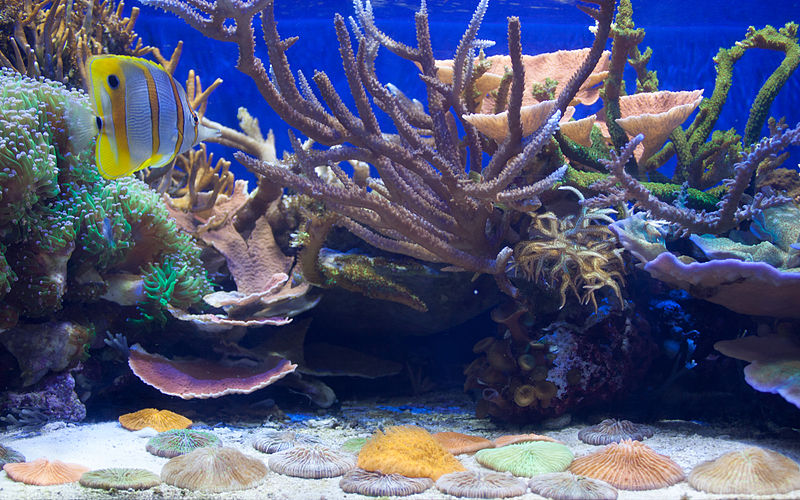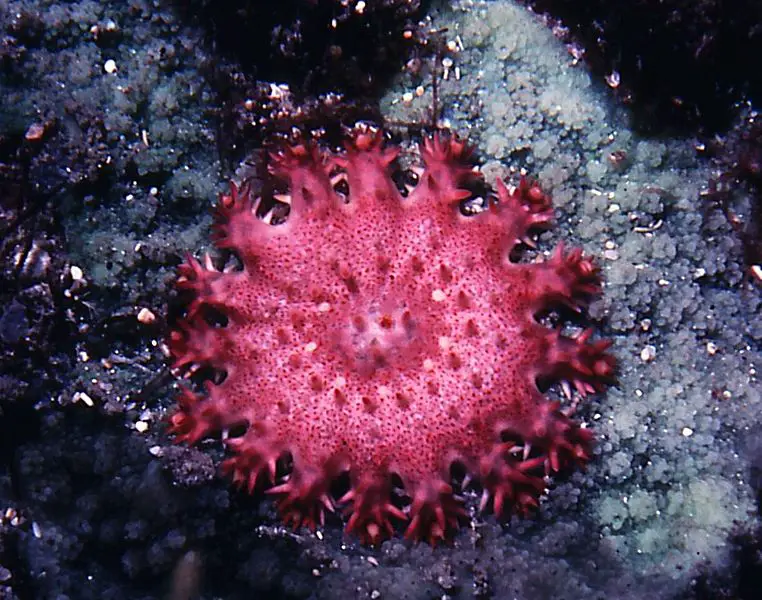How can I tell if my corals are stressed or unhealthy? Identifying Key Signs and Solutions
Coral reefs are not only breathtakingly beautiful but also vital ecosystems that support a diverse array of marine life. However, these fragile and intricate structures face numerous challenges, with stress significantly threatening their health. Recognizing the signs of stressed or unhealthy corals is crucial for reef keepers and marine biologists to take timely action and safeguard these invaluable ecosystems. By understanding the key indicators of coral stress and poor health, we can implement practical solutions to preserve and restore coral reef ecosystems. This article aims to provide readers with essential knowledge on identifying the signs of stressed or unhealthy corals and practical strategies to address these challenges, thereby contributing to coral reefs’ long-term health and survival worldwide.
Corals, the foundation of marine ecosystems, face numerous challenges in maintaining their health. One significant concern is the impact of stress on these fragile organisms. Therefore, recognizing the signs of stressed or unhealthy corals is essential to take appropriate action and promote their well-being.
Various factors, such as changes in water temperature, lighting, and water chemistry can cause coral stress. Understanding the symptoms of stress and unhealthy corals is vital for reef keepers and marine biologists, who must monitor and maintain coral health to preserve their ecosystems. This article aims to help readers identify the signs of stressed or unhealthy corals and how to address these challenges effectively.

Identifying Stressed and Unhealthy Corals
Like other living organisms, coral can exhibit signs of stress and poor health. It is essential for reef-keepers and marine conservationists to recognize these indicators to maintain the health of their corals and preserve the delicate coral reef ecosystems.
Color Changes
Coral color changes are often the first and most noticeable sign of stress. Coral bleaching is a prime example of this, where corals lose their vibrant colors due to the expulsion of symbiotic algae living within their tissues. This often happens due to elevated water temperatures, pollution, or other environmental stressors. As a result, coral bleaching is considered a significant threat to coral reefs worldwide.
Another color change that may indicate poor coral health is the spread of coralline red algae. This algae is a common component of coral reefs, but an overgrowth can lead to the smothering and death of corals.
Receding or Damaged Tissue
An unhealthy coral may also exhibit receding or damaged tissue. One way to identify such issues is by examining the coral’s surface for signs of tissue loss, such as patches or areas of exposed skeleton. This could indicate coral disease, leading to partial or entire colony death. Various factors, including temperature, stress, pollution, and physical injury can cause coral diseases.
Abnormal Growth Patterns
Unusual growth patterns in corals might signify stress or disease. For instance, a coral experiencing stress may grow slower or exhibit irregular shapes and structures. A practical method to gauge a coral’s health is to monitor its growth over time and compare it to expected growth rates for the particular species. In addition, environmental factors such as high nitrate and phosphate levels can lead to these abnormal growth patterns, affecting the coral’s overall health and stress levels.
By keeping an eye on these indicators, marine hobbyists and caretakers can help maintain the health of their corals and contribute to the preservation of global coral reef ecosystems.
Factors Contributing to Coral Stress and Poor Health
Various factors can impact the overall health and stress levels of corals. These factors can be broadly categorized into sub-sections, including water quality, lighting and Photosynthetically Active Radiation (PAR), temperature and salinity, and diseases and pests.
Water Quality
Water quality is crucial for maintaining coral health. Changes in parameters such as alkalinity, salinity, and the presence of pollutants can lead to stress in corals. Alkalinity plays a significant role in coral’s ability to produce their skeletons, while salinity affects the overall health and stability of the reef ecosystem. Therefore, regular water changes help maintain the water quality and reduce stress on corals.
Lighting and Photosynthetically Active Radiation (PAR)
Lighting is vital to coral health, as corals rely on photosynthesis for their energy needs. The measure of light intensity that corals utilize for photosynthesis is called Photosynthetically Active Radiation (PAR). Both insufficient and excessive PAR can lead to coral stress, as corals require specific lighting conditions for their symbiotic algae (zooxanthellae) to perform photosynthesis.
Temperature and Salinity
Temperature and salinity are closely tied to coral health, as corals thrive within specific ranges of these parameters. Climate change has led to increased sea surface temperatures, which can result in coral bleaching events where corals expel their symbiotic algae, causing increased stress and reduced reef health. Similarly, changes in salinity levels can adversely affect corals, making it imperative to monitor and maintain optimal conditions in the reef environment.
Diseases and Pests
Corals can be affected by various diseases and pests, leading to poor health and stress. Coral diseases often respond to biological pressures, such as bacteria, fungi, and viruses, as well as non-biological stresses, such as increased sea surface temperatures, ultraviolet radiation, and pollutants source. Pests like crown-of-thorns starfish and other invasive species can also cause significant damage to coral reefs by feeding on corals, leading to decreased reef health and increased stress within the ecosystem.
Different Types of Corals and Their Stress Symptoms
Understanding how to recognize stress or health issues in various corals can help maintain a thriving coral reef ecosystem in an aquarium. In this section, we will cover stress symptoms in soft corals, large polyp stony (LPS) corals, and small polyp stony (SPS) corals.
Soft Corals
Soft corals are known for their flexible, non-calcified structures. When healthy, these corals exhibit vibrant colors and are well-expanded. Common signs of stress in soft corals include:
- Shrinking or retraction of polyps
- Loss of color or discoloration
- Decreased expansion due to insufficient light and nutritional needs
Large Polyp Stony (LPS) Corals
LPS corals have large, fleshy polyps and a calcified skeleton. These corals can be more susceptible to stress due to their larger size and higher nutrient demand. Stressed LPS corals may display the following:
- Tissue recession or the exposure of the coral skeleton
- Inflammation or foul smell due to bacterial infections
- Bleaching or turning white due to the expulsion of zooxanthellae algae
- Altered growth patterns, such as delayed development or abnormal growth

Small Polyp Stony (SPS) Corals
SPS corals have smaller polyps and a more rigid skeleton than LPS corals. Therefore, they are primarily dependent on light for their nutritional needs. Symptoms of stress in SPS corals may include:
- Brown or darkening coloration due to increased zooxanthellae densities in response to insufficient light
- RTN (Rapid Tissue Necrosis) or STN (Slow Tissue Necrosis), where the coral tissue is rapidly or gradually lost, exposing the white skeleton
- Tissue thinning, resulting in a more transparent and fragile appearance
By observing the stress symptoms of different types of corals, you can address their specific needs and ensure a healthy, vibrant coral reef for all inhabitants within the tank.
Preventing and Addressing Coral Stress
Understanding the signs of coral stress and maintaining a healthy environment is crucial for keeping corals vibrant and thriving in a reef aquarium or ocean habitat. The following sub-sections outline essential steps to prevent and address coral stress:
Maintaining Optimal Water Conditions
Water quality plays a vital role in the health of corals, as it directly affects their ability to carry out essential processes such as calcification and photosynthesis. Some crucial water parameters to monitor and maintain include salinity, alkalinity, pH, calcium and magnesium levels.
Regular water changes can help maintain ideal water conditions and remove potential stressors, such as excess nutrients and pollutants. Monitoring and maintaining stable water temperature is also essential, as sudden fluctuations or unusually high temperatures can lead to coral bleaching.
Improving Lighting and PAR
Proper lighting is essential for corals to thrive, as they rely on photosynthetic processes facilitated by algae (zooxanthellae) living within their tissues. Knowing the light requirements of each coral species is crucial, as different corals may have varying needs for intensity and spectrum.
Photosynthetically Active Radiation (PAR) measures the usable light that corals can absorb and use for photosynthesis. Providing adequate PAR levels can minimize stress and promote optimal growth in corals.
Reducing Pests and Pathogens
Corals are susceptible to various diseases and pests, significantly affecting their vitality and overall health. Therefore, identifying potential issues and taking appropriate measures to prevent or address the problem is essential in maintaining a healthy coral ecosystem. Some common coral pests and disease-preventing methods include:
- Regular inspection of corals and keeping an eye out for signs of disease, such as tissue loss or discoloration
- Quarantining new coral specimens before introducing them to the main aquarium to prevent the spread of potential pathogens
- Maintaining optimal water quality and stable environmental conditions, which helps corals develop a more robust immune system to fight off infections and diseases
By combining these measures, reef keepers can minimize the risk of coral stress and promote a thriving, healthy environment for these important marine species.
Conservation Efforts and Coral Reef Health
Coral reefs are essential ecosystems that provide significant ecological, economic, and societal benefits. However, various factors such as climate change, pollution, and invasive species have resulted in a global decline in coral health, with the world losing 30 to 50 percent of its coral reefs [source].
Efforts to preserve and restore coral reef health are being carried out by numerous organizations, including the NOAA Fisheries [source] and the US EPA [source]. These organizations implement various conservation programs and strategies, such as:
- Protecting water quality in watersheds and coastal zones through Clean Water Act programs;
- Contributing to monitoring and assessment efforts for coral reefs in the U.S.;
- Researching to understand the causes of coral reef deterioration;
- Coordinating efforts as a co-chair of the U.S. Coral Reef Task Force;
- Supporting international initiatives for better coral reef ecosystem management.
Researchers are also exploring novel methods to identify stressed corals, which can help pinpoint the species that require immediate protection from warming ocean waters [source].
Combining targeted conservation efforts with broader actions to address climate change, pollution, and other threats, is essential for the long-term health and survival of coral reefs worldwide.
Conclusion
Preserving the health of coral reefs is a collective responsibility that requires concerted efforts from individuals, communities, and organizations worldwide. By being vigilant and proactive in identifying the signs of stressed or unhealthy corals, we can take the necessary steps to mitigate the factors causing stress and implement appropriate solutions. Maintaining optimal water conditions, providing suitable lighting, reducing pests and diseases, and supporting conservation efforts are all essential components of preserving the well-being of coral reefs. Through these combined efforts, we can protect and restore these extraordinary ecosystems, ensuring that future generations can continue to marvel at the beauty and richness of coral reefs. Let us join forces to secure a sustainable and thriving future for these vital marine habitats.



